How to maintain a dishwasher?
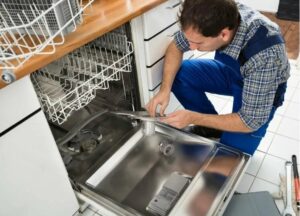 The dishwasher was invented more than a hundred years ago, but as a popular home assistant, present in almost every home, it appeared not so long ago, at least in our country. Like any household appliance, it needs regular care and cleaning. Dishwasher maintenance does not require excessive effort and does not take much time, but it does require regularity.
The dishwasher was invented more than a hundred years ago, but as a popular home assistant, present in almost every home, it appeared not so long ago, at least in our country. Like any household appliance, it needs regular care and cleaning. Dishwasher maintenance does not require excessive effort and does not take much time, but it does require regularity.
Watch out for filters first.
One of the most important operating components of a dishwasher, which requires regular and complete maintenance, is its filter. Its task is to prevent product residues from entering the water circuit of the device, where water and detergent circulate. The debris that accumulates in the unit does not allow water to be fully supplied and drained, which significantly affects the quality of dishwashing.
The filter itself consists of:
- coarse cleaning unit (detains large parts of products);
- easy cleaning unit (catches small food debris, including drops of fat):
- perforated plate (essentially a fine mesh that allows dirty liquid to pass into the filter element itself).
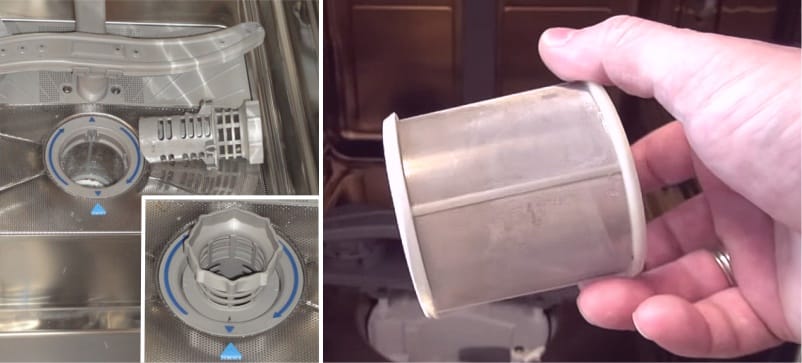
Cleaning the filter with your own hands is not difficult. First, it should be removed from the device (how to do this correctly is described in detail in the operating instructions for the unit). After unrolling it into its components, remove all adhering food residues and rinse. Particular care should be taken when cleaning the perforated plate: it is made of nylon and can easily become deformed due to rough or improper handling. As a result, the protection of the water unit from contamination will be impaired, which will reduce the quality of the machine’s operation.
To wash the filter components, you can use dishwashing detergents, old toothbrushes, and soft sponges.
After assembling and installing the filter in its original place, you should make sure that it is correctly and securely fixed, well protects the drain from food debris and does not interfere with the rotation of the circulation pump blades.
We monitor the condition of the circulation pump
Another important element of the machine that requires increased attention and regular cleaning is the pump. Its task is to ensure forced circulation of liquid and detergents inside the hopper throughout the entire operating cycle. Due to the fact that filtered water is used for washing, the unit fills with new liquid only after changing the mode, that is, water resources are saved.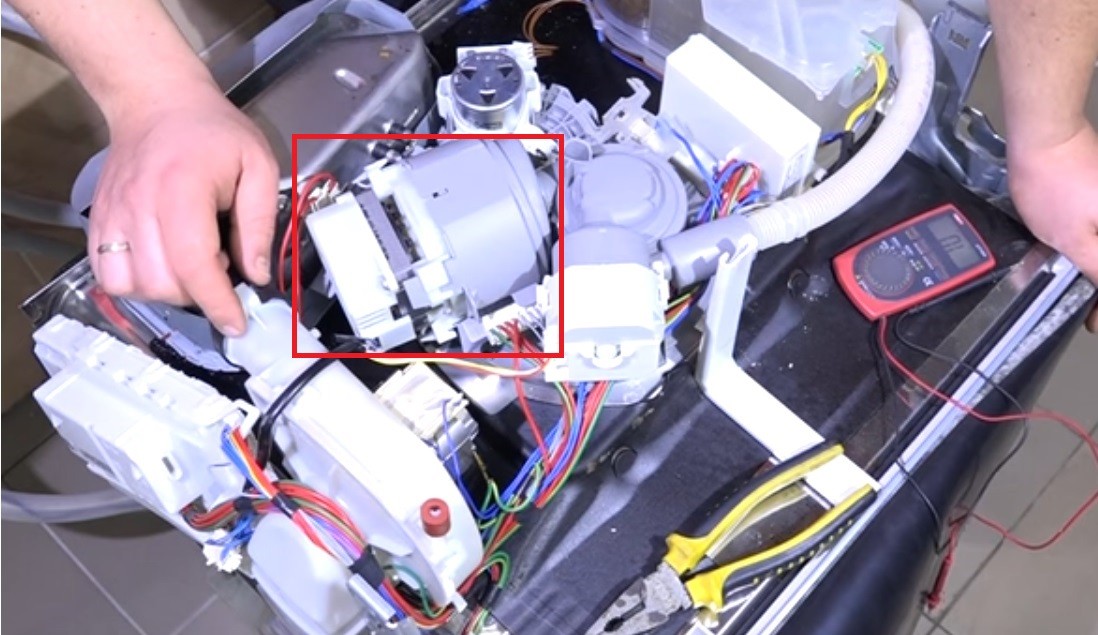
The main procedure for caring for the pump is to clean the water lines from the particles of fat that accumulate inside. By forming plaque, they do not allow water to fully move through the tubes. As a result, the pressure inside the pump itself increases. This leads to faster wear, malfunctions and breakdowns, the most noticeable of which is a burnt out pump.
It is easy to prevent such a turn of events: it is enough to clean the unit every 3-6 months (the frequency depends on the frequency of operation of the household appliance). For a high-quality procedure for removing fatty deposits inside the lines, you will need a specialized detergent and a couple of hours of time. The gel, tablet or liquid should be poured into the appropriate compartment and the washing mode with the maximum water heating temperature should be selected.When cleaning, dishes are not loaded into the hopper, that is, the machine runs “idle”.
Cleaning moving elements
The need to clean the dishwasher will be indicated by decreased quality of dishwashing and the presence of drips and stains on it. This is a clear sign of contamination of the impellers (water sprinklers) located under the baskets for loading kitchen items. Each of the impellers has several nozzles, thanks to which a powerful water shock is formed and, accordingly, the dishes themselves are washed.
Any housewife can clean them with her own hands: the sprinkler can be easily removed from its retainer. Next, it should be inspected for blockages and rinsed under running water. If the holes are clogged with thick plaque, remove it using a thin and long object (wire, toothpick, open paper clip). After the cleaning procedure, install the sprinklers in place and check their correct location and secure fixation.
Wash the body inside and out
The surfaces of the dishwasher, both external and internal, also need regular care. The unit's hopper requires special attention: its contamination significantly affects the quality of operation of the device, and the material from which it is made - stainless steel - is more difficult to maintain. So, to clean the bunker it is forbidden to use:
- rough polymer sponges;
- abrasive cleaning powders;
- products containing chlorine.
Each of them can ruin the surface, leaving on it small and large scratches, traces of oxidation or various stains that cannot be removed. It is recommended to use a microfiber cloth or other soft material to clean the inside of your dishwasher, and use a mild dishwashing detergent as a cleaning agent. 
If the housewife uses specialized detergents for daily washing of dishes, additional care of the internal surfaces is not required, since cleaning occurs automatically during standard operating cycles of the dishwasher.
Proper internal care requires not only the use of high-quality household chemicals, but also the correct setting of regenerating salt dispensers and dish rinse aid.
You can get detailed information about the dispenser settings in the device’s operating instructions. However, they directly depend on the quality of the water supplied to the house where the household appliance is installed. And it differs not only in regions, but also in cities and even their districts. Therefore, housewives are usually able to determine the optimal parameters experimentally, evaluating the washing results and adjusting the settings. If all the parameters are set correctly, there will be no streaks, residues of lime contained in the water, drops of fat and other contaminants on the walls of the dishwasher: after the end of the cycle, the hopper will be perfectly clean and dry.
If limescale does appear on the walls of the inner chamber and removing it with a simple detergent does not produce results, you can wipe the particularly dirty areas with table vinegar. It is not recommended to be overzealous with this; a few movements of the napkin are enough. If there is no result, you can do a more aggressive cleaning: place a bowl or pan with vinegar in the basket and run the standard washing cycle. The volume of vinegar should not exceed 200 ml. After finishing using the machine, wipe its walls again with dishwashing detergent.
When cleaning your dishwasher, don’t forget about the appliance doors, seals, and fasteners. They, like the internal surfaces, are capable of accumulating small particles of lime, and this will affect the tightness of the door and the quality of operation of the unit. All dirt can be easily removed from them with a vinegar solution; you can use a napkin or a fine-pored sponge.
You should also pay attention to the baskets where the dishes are stored. Most often they are made of metal coated with enamel, and therefore it is important to prevent cracks and chips of the coating. If drops of water remain on them after using the dishwasher, you need to remove them with a soft, dry towel. It is also recommended to leave the appliance door ajar until it has completely cooled down. They do this so that condensation does not accumulate inside, which is the main cause of mold in the internal lines of the machine.
You should also remember about external surfaces, which should be regularly treated with the cleaning agents familiar to the housewife.
Interesting:
Reader comments
- Share your opinion - leave a comment
Categories
Washing machine repair


For buyers

For users

Dishwasher





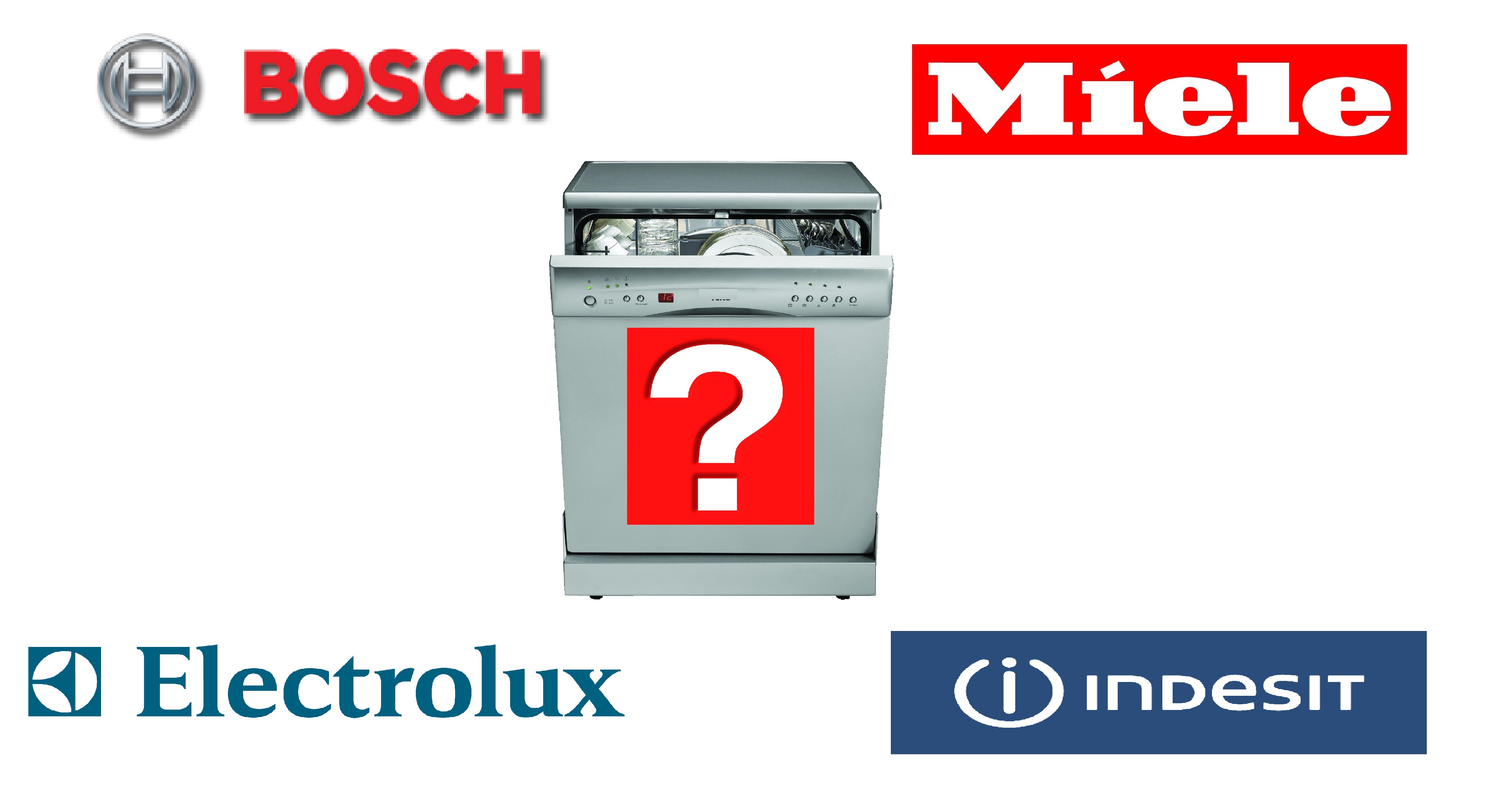
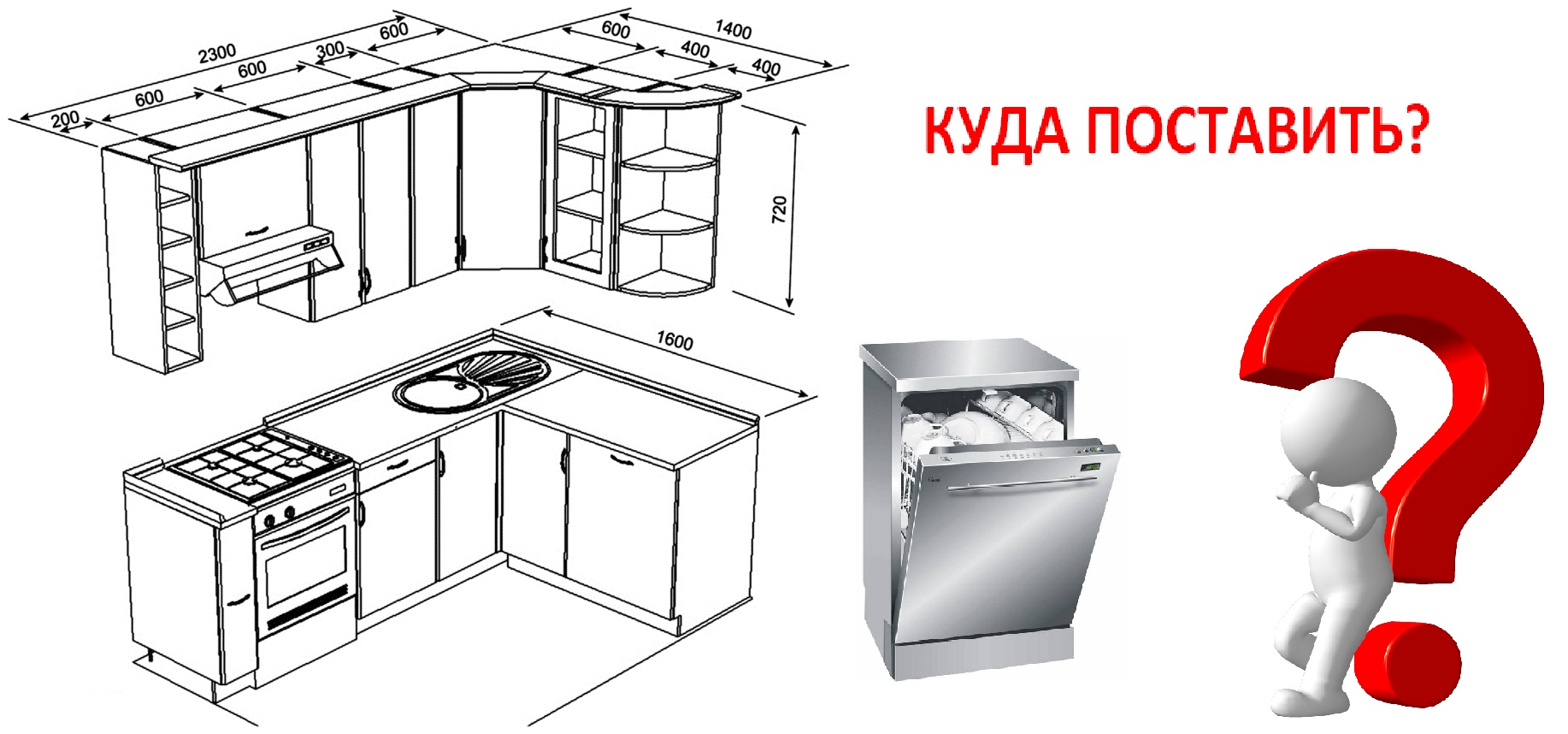










Add a comment